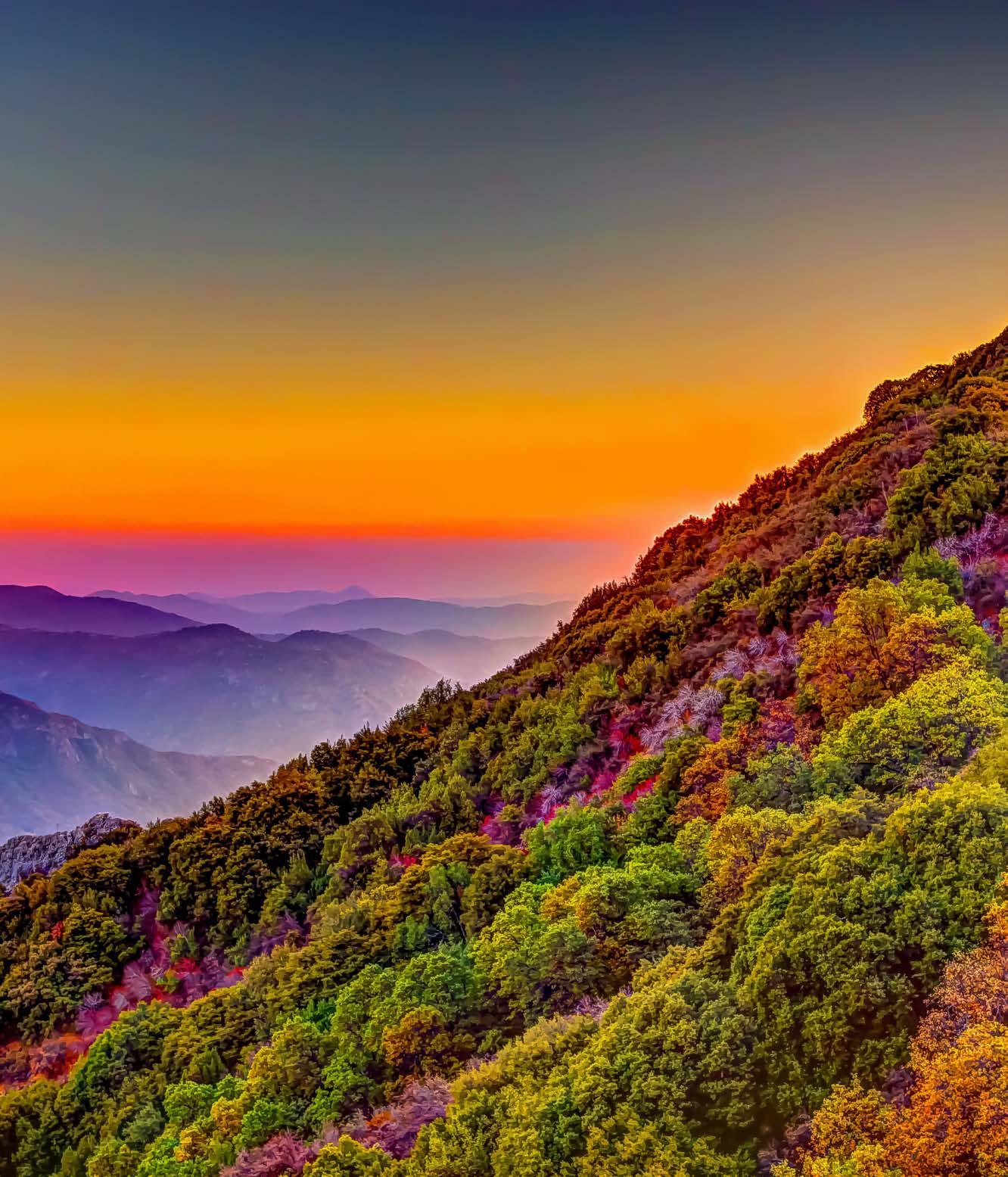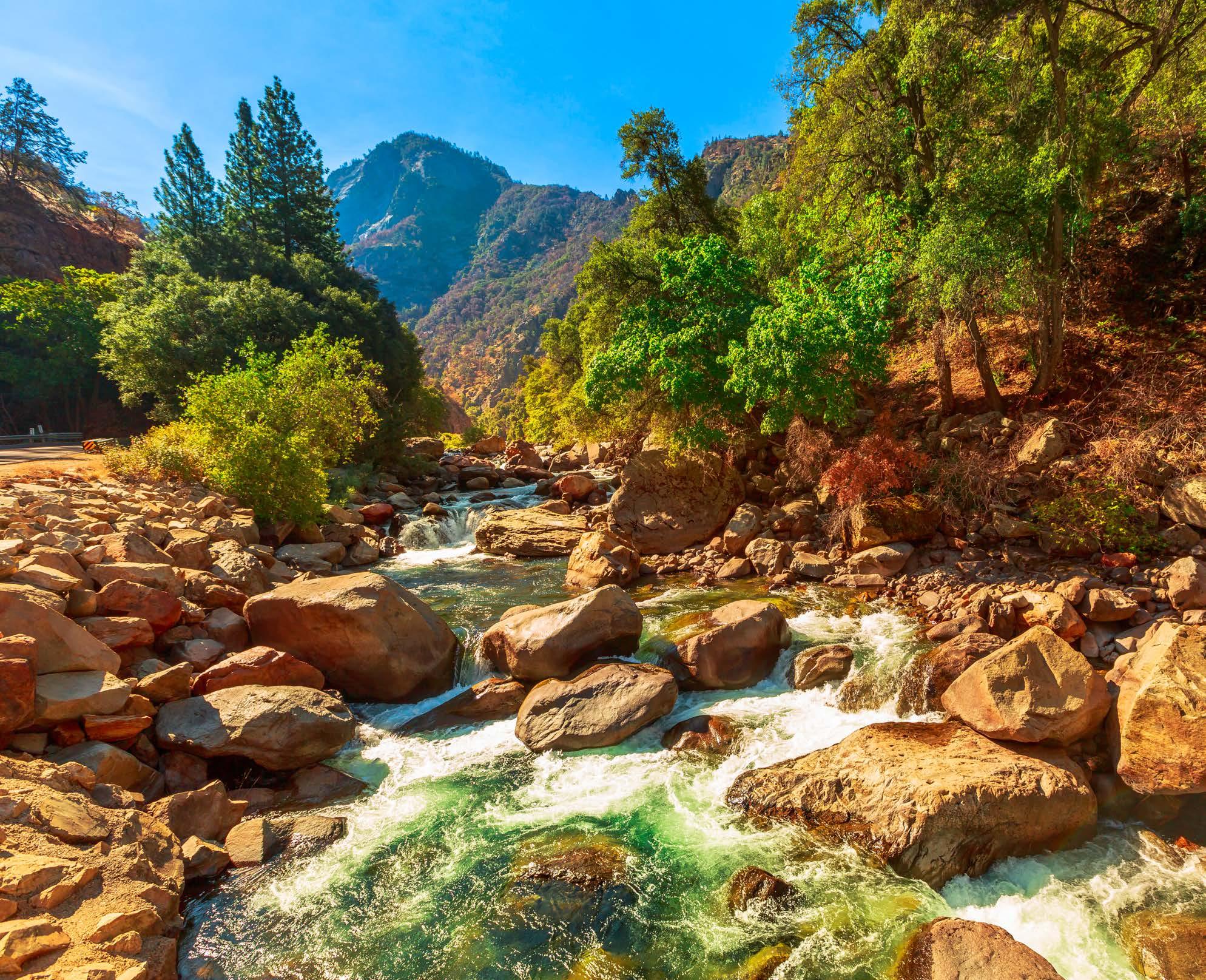
4 minute read
Sequoia and Kings Canyon National Parks
Sequoia and Kings Canyon National Parks span the historic homeland of the Mono (Monache), Yokuts, Tübatulabal, Paiute and Western Shoshone.
It was on September 25, 1890, that President Benjamin Harrison signed legislation to protect giant sequoia trees from logging. Naturalist John Muir was on board too, once calling the park a “rival to Yosemite,” given its resemblance to the Yosemite Valley.
It’s here that you’ll find the world’s largest remaining grove of ancient sequoia trees — the world’s largest by volume — along with plunging valleys, vast canyons, rugged foothills and distinctive, rocky outcrops.
The Flora and Fauna
Offering an elevation range from the low foothills to the white-capped peaks of the Sierra Nevada, a diversity of species call the park home. Dense chaparral shrubs, riverside vegetation and oak woodlands dominate the low foothills, attracting everything from black bears to gray foxes, bobcats, and striped and spotted skunks.
In the subalpine and alpine meadows, encounter a high country of lakes, open forests, meadows and miles upon miles of granite. In this area, you may spot pikas, marmots and white-tailed jackrabbits; winged wonders like the American pipit and gray-crowned rosy finch; and rarities such as Sierra Nevada bighorn sheep and mountain yellow-legged frogs.
By contrast, the low to mid-montane elevations reveal incense cedars, firs, pine forests and a smattering of giant sequoia groves. It’s the perfect environment for mule deer, black bears, mountain lions, chickarees, gray squirrels and a variety of birds.
The Weather
Varying significantly in temperature from area to area (upwards of 30 F, in fact), the weather at Kings Canyon and Sequoia can change on a dime. Be sure to check the weather conditions and outlook for the region you plan to explore. Note, too, that many roads open and close seasonally, so that must be considered.
The foothills experience mild, wet winters and hot, dry summers, with most of the precipitation occurring from January through mid-May. Lowhanging clouds that drift in from the west are common during winter, obscuring the countryside for days at a time.
Summer in the Sequoia Grove introduces warm days and cool evenings. An average of 40-45 inches of precipitation falls annually, much of it comes in the form of winter snow, which is usually present from December through May. Note that Lodgepole area swings 10 F - 15 F cooler than its counterparts. Cedar Grove temps are cooler than the foothills and hotter than the average seen at middle elevations.
THE HIKES, DRIVES AND VIEWPOINTS
Mist Falls Trail
Journey 8.2 miles on the out-and-back Mist Falls Trail to see wow-inducing waterfalls and endless meadows, plus a forested stretch along a sandy path skirting Kings River.
Rae Lakes Loop
Adventurers would be remiss to skip the 41.4-mile Rae Lakes Loop backpacking trail through Kings Canyon and Sequoia National Parks. It sports a 7,000-foot elevation gain; chance to climb up Glenn Pass; and stretches along the storied John Muir Trail.
General Grant Loop Trail
See the world’s largest living trees — specifically the staggering General Grant Tree — along the .5-mile General Grant Loop Trail. Then, for a change of pace, hit the Zumwalt Meadow and Roaring River Falls Trail, a 4.1-mile, out-and-back trek with unforgettable Sierra scenery, including towering granite walls, expanses of alpine meadow and a showpiece waterfall that tumbles over granite monoliths into a rock pool below.
Moro Rock Trail
Want spectacular views of Kings Canyon and Sequoia National Park? Taking the Moro Rock Trail to the top of a huge granite dome may be for you.

Kings Canyon River
Getty
About the Park
Location - The southern Sierra Nevada, in Fresno and Tulare Counties, respectively
Established - September 25, 1890 and March 4, 1940, respectively
Area - 865,000-plus acres combined










